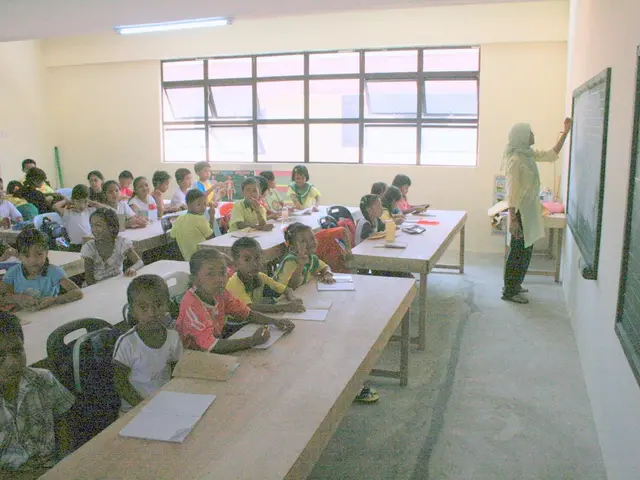Advantages of Science, Technology, Engineering, and Mathematics (STEM) Education and Dissemination
In the rapidly evolving world we live in, the significance of Science, Technology, Engineering, and Mathematics (STEM) education has never been greater. STEM publishing plays a pivotal role in fostering creativity, collaboration, critical thinking, and communication among students, making it an essential component in the educational landscape.
Publishers, with their wealth of knowledge and resources, have a crucial responsibility to develop critical thinking and problem-solving characteristics in children through their content. By creating engaging, informative, and imaginative STEM materials, they can help children explore and experience how these concepts relate to real life.
STEM publishing encompasses a wide range of activities, from explaining basic science, technology, engineering, and mathematics topics to publishing academic and research papers. It offers interactive content that highlights the meaning and benefits of studying STEM's intertwined disciplines. Moreover, it provides opportunities for children to delve into unconventional topics, such as building a pyramid, and encourages experimentation, research, and builds resilience.
When creating STEM textbooks for children, publishers must consider several key factors to ensure the content is engaging, educational, and accessible. Age appropriateness is paramount, with publishers tailoring content and complexity to suit the developmental stage of the children. Hands-on activities and projects are essential, aligning with the children's age and fostering their understanding of STEM concepts.
Publishers also recognise the importance of cultural and inclusive design. By incorporating diverse examples and illustrations, they create a sense of belonging and engagement among children from various cultural backgrounds. Accessibility features, such as text-to-speech options and visual aids, cater to children with reading difficulties and special needs.
Educational goals and alignment are another critical consideration. Publishers ensure that the learning outcomes and objectives of each chapter or section align with educational standards and curriculum guidelines. Skill development, such as problem-solving, critical thinking, and creativity, is a primary focus.
Lastly, feedback and assessment tools are integral to the success of STEM publishing. Incorporating quizzes, tests, and assessments helps teachers evaluate students' understanding and progress. Providing teachers with tools to offer constructive feedback and guide students towards improvement is essential.
STEM education, as advocated by the US National Science Foundation, is an essential learning topic for students of the current century. It acts as a stepping stone for women to enter the math and science fields and empowers young girls to engage with STEM subjects, helping to break traditional gender roles in the scientific and technological areas.
In conclusion, STEM publishing, with its focus on age-appropriate content, cultural and inclusive design, educational goals and alignment, interactive and engaging format, and feedback and assessment tools, is a powerful tool in fostering the next generation of innovators and problem-solvers. By igniting and maintaining curiosity in children, it can help them take their first step toward a future in STEM education.
Engaging online education resources for both self-development and education-and-self-development can draw upon the innovative and creative approach of STEM publishing. By offering interactive, imaginative, and accessible online STEM education materials, these resources can contribute to fostering critical thinking, problem-solving skills, and resilience in children, while aligning with cultural and educational standards.
Publishers, whether in print or online, can leverage their knowledge and resources to expand the reach of STEM education, breaking down barriers for women and girls interested in math and science, ultimately empowering a more diverse pool of intelligent minds in the STEM fields.




